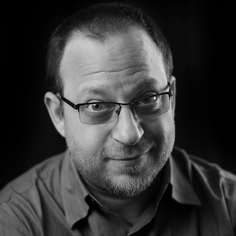June 2019: Jonas Hauptman

Jonas Hauptman
Assistant Professor
College of Architecture and Urban Studies
MFA, Metalsmithing, Cranbrook Academy of Art
BFA, Sculpture, Rhode Island School of Design
Email jonasah@vt.edu
How do you see your work contributing to the goals and vision of IIHCC?
People may assume engineering comes from engineers, and design comes from designers, but innovation is never siloed. Transdisciplinary collaboration is at the foundation of the Destination Areas. Our work in the bamboo projects and plastic felting projects is an excellent example of how an organization can leverage diverse teams. These projects include graduate and undergraduate students and diverse faculty from across different disciplines, businesses, institutions and even continents. The variety of approaches within a diverse team rapidly tests different paths towards the goal. When operating effectively, our project teams blur existing boundaries allowing team mem-bers to move fluidly through different roles regardless of their position or field.As a leader, my goal is to challenge the meaning of “Intelligent Infrastructure for Human-Centered Communities.” The need for “Human-Centered” design reflects systemic problems that have often resisted narrow problem-solving approaches. Too often in design, humans unconsciously focus on the needs of like-humans instead of broader communities, surrounding ecosystems and the planet earth. As a leader of designers, I try to stay broad—to design for the planet. Bamboo is interesting in its ability to dually serve human needs and replace more harmful or resource-intensive materials. For example, my hope is to develop bamboo derived materials that, in the future, can replace steel in large buildings and vehicles. Most importantly, my goal as a designer and educator, is to inculcate a similar responsibility into the next generation of designers.
What other areas outside of your discipline would you entertain for future research and proposal work?
My research in bamboo fits most easily into the discipline of material science. Specifically, I would like to study the material life cycle in more detail to determine if our projected impact matches reality. Additionally, I am interested in better understanding the structure of the plant, how it grows, how to take it apart and composite it back together to change its performance and form. Our current research direction has been based on intuition, and I would like to start incorporating more data into that strategic decision making. For example, we would like to start incorporating the impact of transportation into the assessment of environment impact for bamboo materials. The forest that’s here [in the United States] is not bamboo. Does that mean bamboo is simply not a responsible material choice in comparison to locally harvested materials? These are questions that I would like to work on answering quantitatively in collaboration with the right colleagues in the near future. I am interested in solving problems, trying to repair, fix or augment things. A colleague and mentor of mine once observed that I am best when a problem requires the development of a prosthetic. I am interested in system problems requiring holistic solutions. I am interested in opportu-nities to incorporate biologic system into my work; building on the discoveries I have made growing grasses as a part of a manufacturing process and my study of plant and fungal forms as materials for new products.


